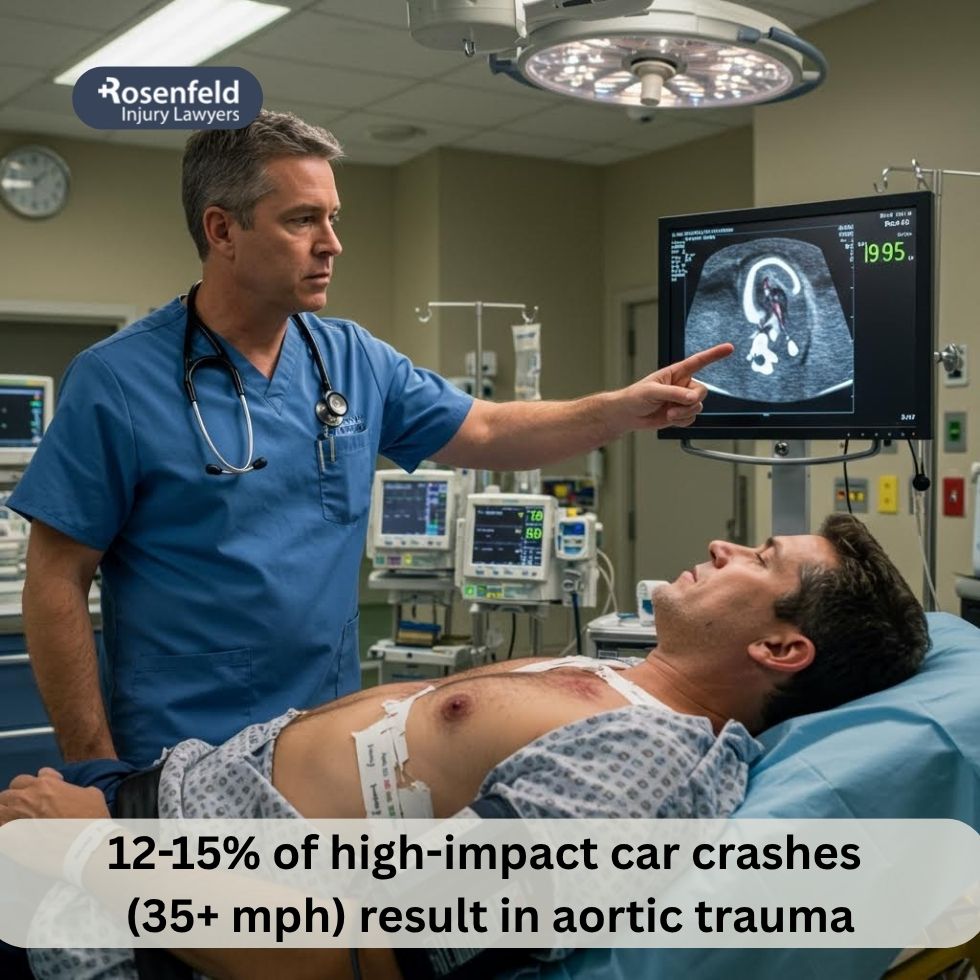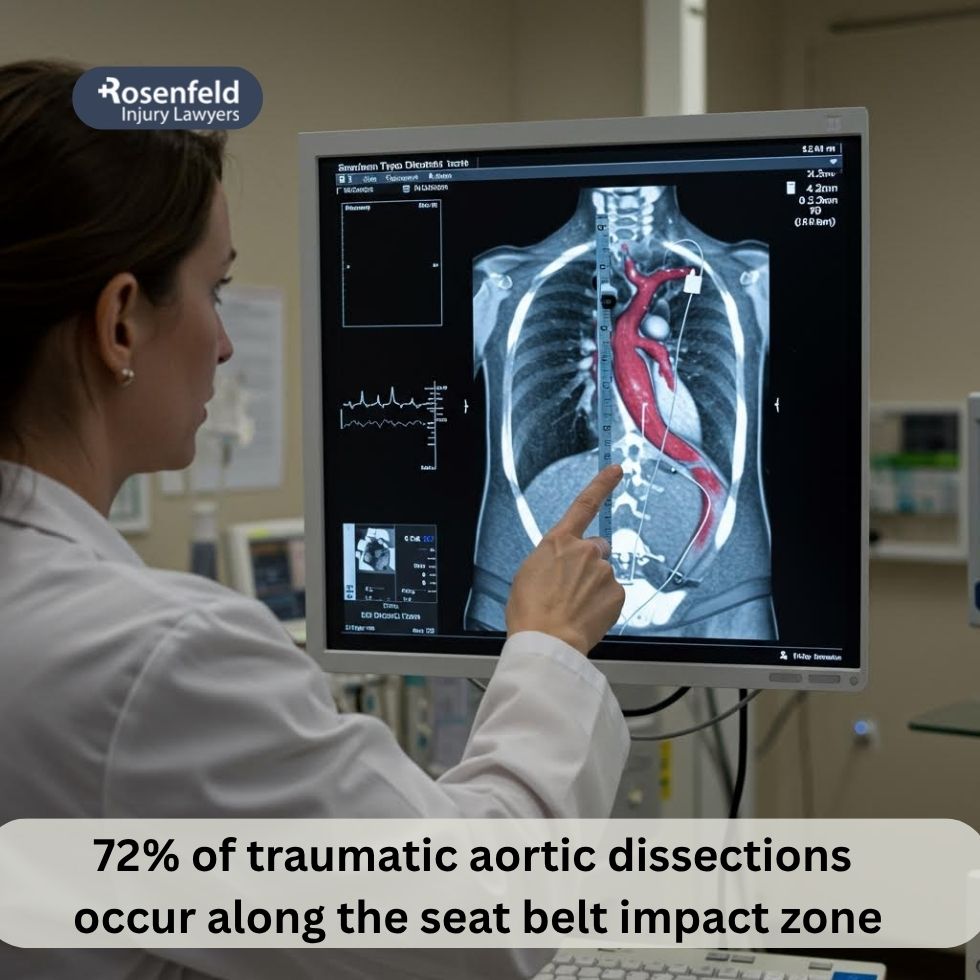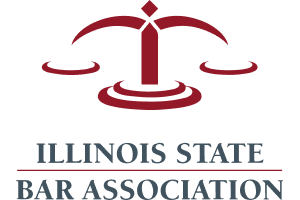- 24/7 Free Consultation: (888) 424-5757 Tap Here To Call Us
Aortic Dissection Injuries From a Car Accident
Aortic dissection injuries from a car accident are rare but life-threatening. They often occur in high-speed crashes where blunt force trauma (often from a seat belt) causes serious damage to the internal organs, particularly the aorta, the body’s largest artery.
These injuries require immediate medical attention and can lead to long-term complications or even sudden death if not diagnosed and treated quickly. If you or a loved one has suffered an aortic dissection caused by a car accident, a Chicago car accident lawyer can help you fight for the financial recovery you deserve.
What Is Aortic Dissection?
Aortic dissection occurs when the inner layer of the aorta tears, allowing blood to break out of the blood vessels and rush between the layers of the artery wall. This disrupts normal blood flow and can lead to internal bleeding, kidney failure, or stroke.
Traumatic aortic dissections are medical emergencies—if left untreated, a rupture in the aorta can be fatal within hours.

How Car Accidents Cause Aortic Dissections
Most aortic dissections result from a violent blow to the chest, impacting the aorta. Think about the force involved in a head-on collision or a T-bone crash at an intersection. The body is flung forward, the chest compresses against the seat belt, and the impact reverberates through the torso. That’s when the damage begins.
Blunt force trauma from the crash can stretch or shear the aortic wall, triggering a dissection. Even if external injuries appear minor, internal damage can still be severe.
Aortic Dissections and High-Speed Accidents
When high-speed accidents are involved, the risks multiply. The faster a vehicle is traveling, the more force your body absorbs on impact — even if you’re wearing a seat belt. The aorta, not designed to withstand sudden deceleration or twisting, is especially vulnerable.
What makes these cases more dangerous is that multiple injuries often happen at once. A traumatic aortic dissection from a seat belt might not be immediately obvious among broken ribs, collapsed lungs, or head injuries. That’s why trained paramedics and ER staff must act quickly to spot the warning signs of a ruptured aorta and damage to the internal organs.
Common Symptoms of Aortic Dissection After a Car Accident
Some symptoms of aorta damage are unmistakable: A sudden, sharp pain in the chest or upper back that feels like something tearing inside. But others — like dizziness, shortness of breath, or a weak pulse — can be dismissed or misread as shock from the crash. It’s important to be alert to the signs of aorta damage, especially in the hours following a collision.
Here are the most common symptoms:
- Stabbing or ripping pain in the chest or back
- Low blood pressure, fainting, or confusion
- Difficulty breathing or noticeable weakness
- Stroke-like symptoms: Paralysis, slurred speech, or vision problems
If any of these symptoms appear after an automobile accident, especially when a seat belt is involved, immediate medical attention is crucial.
Diagnosing and Treating Aortic Dissections After a Car Accident
Quick diagnosis is critical. Most emergency rooms will perform advanced imaging tests such as CT scans, MRIs, or echocardiograms to confirm whether an aortic dissection has occurred.
If diagnosed early, medications may be given to reduce blood pressure and slow the progression of the tear. However, many patients require emergency surgery — either through open-heart procedures or endovascular repair — to reinforce or replace the damaged section of the aorta.
Long-Term Recovery and Medical Complications
Recovery from damage to the aorta can be long and difficult. Patients often remain in the hospital for weeks, followed by ongoing cardiac rehabilitation. Even after they’re released, they may need to take medications for life to control blood pressure and prevent further damage.
Many people experience long-term health changes or emotional distress, compounded by other injuries. Some may even be unable to return to work or perform daily tasks without support.

Legal Considerations for Aortic Dissection Victims in Illinois
In Illinois, injury victims have the right to pursue compensation. To build a strong case, your legal team must show that someone else’s negligence caused the accident — and that the aortic dissection resulted directly from the crash.
These cases often involve complex medical evidence and testimony from specialists. Under Illinois law (735 ILCS 5/13-202), you generally have two years from the date of the accident to file a personal injury claim.
Compensation Available for Aortic Dissection Injuries
Because aortic dissections are so serious, the financial impact can be overwhelming. Medical care alone can result in tens or even hundreds of thousands of dollars in medical bills. You may be entitled to compensation for:
- Emergency and long-term medical bills
- Lost income and loss of future earning capacity
- Physical pain, emotional suffering, and reduced quality of life
Wrongful Death Claims for Fatal Aortic Dissections
Sadly, many aortic dissections caused by car crashes are fatal. In these tragic situations, Illinois law (740 ILCS 180/1) allows eligible family members to file a wrongful death lawsuit.
A wrongful death claim may help cover:
- Funeral and burial expenses
- The deceased’s lost income or benefits
- The emotional loss of companionship and guidance
Why You Need a Car Accident Attorney for Aortic Dissection Claims
Proving a case involving aortic dissection injuries following an accident is more complicated than most personal injury claims. You’ll need to show how the accident caused the injury, even if the symptoms appeared later. You’ll also need to counter arguments from insurance companies that the condition was pre-existing or unrelated.
An experienced attorney will:
- Connect your medical records to the trauma sustained in the crash
- Work with surgeons and cardiology experts to support your case
- Handle negotiations and prepare for litigation if necessary
Contact a Chicago Car Accident Lawyer for a Free Consultation

If you’ve suffered an aortic dissection injury following a car accident, don’t wait to get help. Contact a Chicago car accident lawyer today to schedule a free consultation. We’ll review your case, explain your rights, and help you receive the compensation you need to move forward.
All content undergoes thorough legal review by experienced attorneys, including Jonathan Rosenfeld. With 25 years of experience in personal injury law and over 100 years of combined legal expertise within our team, we ensure that every article is legally accurate, compliant, and reflects current legal standards.







